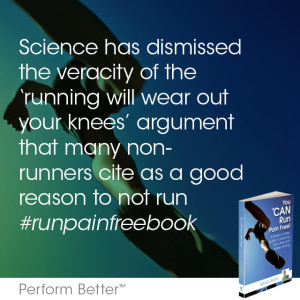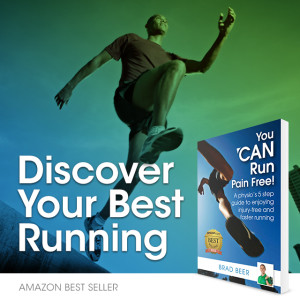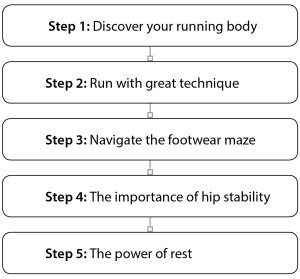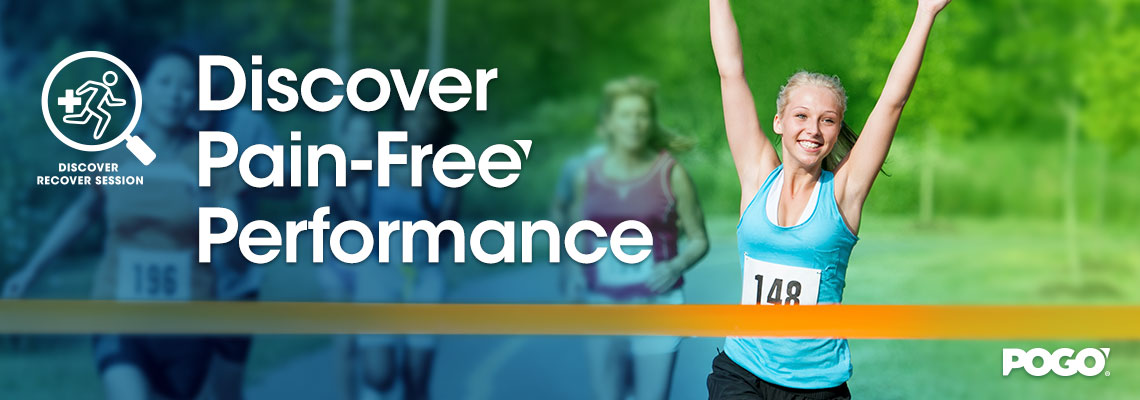Is Running Bad For You? The Benefits, Myths & Facts About Running
Is Running Bad For You? The Benefits, Myths & Facts About Running
Have you ever contemplated whether running is bad for you? If you have than you are on the side of the majority. Depending on who you ask, you will likely get a different response.
Those who love to run will tell you all the wonderful things about running, while those who prefer to steer clear of running shoes will often come up with a list of reasons and validating points as to why running is in fact ‘bad for you’.
So is running in fact bad for you? I thought I would explore this question by looking at some of the benefits, myths, and problems with running.
The below is an excerpt taken from my recently released and now Amazon Running and Jogging Bestselling book You CAN Run Pain Free!
The Benefits of Running
It is well accepted that running produces many positive effects on the body. Scientific research has proven that exercise such as running is associated with a wide array of health benefits. These benefits include:
- lower risk of cardiovascular disease
- lower risk of stroke
- lower risk of high blood pressure
- lowered risk of osteoporosis
- lower risk of type 2 diabetes
- lower risk of colon and breast cancer
- reduced risk of clinical depression
- better management of body weight and body mass index
- better cognitive function
In fact, researchers have even discovered that running may be the ‘magic pill’ of good health, and the ‘fountain of youth’ we would all seek.
Running may be the ‘magic pill’ of good health & the ‘fountain of youth’ we all seek #running #physio #health @pogophysio Share on X
A Longer Life for Runners
A 2014 study found that, compared with non-runners, runners have an incredible 45 to 50 per cent lessened chance of dying from cardiovascular disease. Researchers also found that runners had a three year increase in life expectancy when compared to non-runners! What makes this study and its results so remarkable is that the study included an enormous 55,137 subjects with 24 per cent (13,233) of the subjects being runners (15). One of the other key findings of this study was that running for even a short time and at slow speeds was enough to result in the markedly reduced risk of dying from cardiovascular disease.
Compared w non-runners, runners have a 45 -50% lessened chance of dying from cardiovascular disease #running #health @pogophysio Share on X
To read more about this study click HERE.
Interestingly, this study paralleled the findings of a study published six years earlier. Researchers at Stanford University looked at 538 runners and 423 healthy non-runners who were all greater than 50 years of age. After nineteen years, only 15 per cent of the runners had died, yet 34 per cent of the non-runners had died. At a follow-up 21 years later, the difference in mortality rates was even more pronounced. This same paper also showed that running reduces the incidence of disability later in life, yielding a higher quality of life in addition to a longer life (16).
Will Running Wear Out Your Knee Joints?
Science has even dismissed the veracity of the ‘running will wear out your knees’ argument that many non-runners cite as a good reason to not run. Researchers at Stanford University investigated the differences in the progression of knee osteoarthritis in middle to older aged runners over two decades. In the analysis, long distance running was not associated with either accelerated incidence or severity of knee osteoarthritis (17).
To read more about this study click HERE.
Another study showed that former competitive runners did not have higher rates of arthritis in their hips, knees or ankles when compared to non-runners (18).

With so many health benefits derived from exercise, more runners in the world would surely mean more healthy bodies in the world. The flow-on effect from healthier individuals would be healthier families, communities and, ultimately, a healthier global population. There would appear to be little or no downside to more people participating in running as a sport, for fitness or as a recreational pursuit.
There would appear 2b little or no downside 2 more ppl participating in running 4 fitness or recreation #running #fitness #health Share on X
The Problem With Running: Getting Injured
A runner will however, encounter one problem, the problem of injury. Although running has not been shown to cause greater rates of knee osteoarthritis or arthritis, running injuries are unfortunately not infrequent. The exact incidence of running injuries is not known in terms of a single number or statistic.
Rather, the incidence of running-related injuries among runners varies in the scientific literature.
Running Injury Frequency
One review examined 1,137 scientific titles and abstracts and cut this initial list own to 17 articles that were of good quality in order to establish the incidence of running-related injury. The running injury incidence rate was reported to vary from 19.4 to 79.3 per cent (19). Another study reported the incidence rate of running-related injury to be as high as 92.4 per cent (20).
An additional review found that for the average recreational runner who is steadily training and who participates semi-regularly in a long distance event, the overall yearly incidence rate for a running injury is between 37 and 56 per cent. This same paper also expressed the injury incidence rate as a number relative to 1,000 running hours, and found that incidence was between 2.5 to 12.1 injuries per 1,000 hours of running. The paper also reported a high recurrence rate of running injuries that ranged from 20 to 70 per cent (21).
One retrospective study of 2,886 runners reported an overall injury rate of 46 per cent (22). Meanwhile reports reveal that injury incidence rates for runners training for the marathon can be as high as 90 per cent (23).
One study found that out of 1,049 runners competing in fun runs held in Brazil, 22 per cent of them reported an injury before a race.24 That is equivalent to almost one-quarter of the field standing on the start line ready to compete in the fun run injured.
The problem with being injured is that the health benefits that running produces are not being experienced. One of the preceding studies concluded that running injuries lead to a reduction of training or training cessation in about 30 to 90 per cent of all injuries (25). So the majority of injured runners will need to stop their running due to their injury.
Whichever statistic you look at, none are overly promising. They all point toward the fact that the large bulk of runners (well over half) will end up injured in some way every year (to learn more about what causes running injuries click HERE).
It’s certainly not exciting for the beginner runner looking to make a start. It’s equally unpalatable to the competitive runner seeking to consistently train for an upcoming event. And it’s a very serious threat to the health of the over-stressed male executive high performer who was just about to start a running training program after being informed he has high blood pressure and cholesterol.
Simple arithmetic tells us that as the participation of runners increases worldwide as part of the global running boom so too will the numbers of injured runners. The correlation between participation and injuries certainly appears to be holding true in the consulting room, where I have observed a spike in the
last several years of running-related injuries.
A Better Way to Run
One interesting yet sad realisation I have arrived at after 9 years of consulting injured runners as a physiotherapist is that . They mistakenly believe that if they run for long enough, or further enough injury will result.
The good news is it doesn’t have to be this way!
This is why I authored the book ‘You CAN Run Pain Free! A Physio’s 5 Step Guide to Enjoying Injury Free and Faster Running’. My book outlines my 5 step method that has helped thousands of injured runners return to pain free running, or injury proof their body so they don’t get injured.
The 5 Step Method is pictured below (as sourced from You CAN Run Pain Free!)
References
15. Lee DC, Pate RR, Lavie CJ, Sui X, Church TS, Blair SN. 2014. ‘Leisure time reduces all –cause and cardiovascular mortality risk’. The Journal of the American College of Cardiology 64 (5): 472-481.
16. Chakravarty EF, Hubert HB, Lingala VB, Fries JF. 2008. ‘Reducing Disability and Mortality Among Ageing Runners: A 21-Year Longitudinal Study’. Archives of Internal Medicine 168 (15): 1638-1646.
17. Chakravarty EF, Hubert HB, Lingala VB, Zatarain, E, Fries JF. 2008. ‘Long Distance Running and Knee Osteoarthritis. A prospective study’. American Journal of Preventative Medicine. Aug 2008; 35(2): 133-138.
18. Konradsen L, Hansen EM, Sondergaard L.’ Long Distance Running and Osteoarthritis’. American Journal of Sports Medicine. Aug 1990: 18 (4): 379-381.
19. Van Gent RN, Siem D, van Middelkoop M , van Os AG, Bierma- Zeinstra SM, Koes BW. ‘Incidence and determinants of lower extremity running injuries in long distance runners: a systematic review’. Br J Sports Med. March 2007: 47: 469-480.
20. Van Middlekoop M, Kolkman J, Van Ochten J, et al. ‘Prevalence and incidence of lower extremity injuries in male marathon runners’. Scan J Med Sci Sports. Apr 2008: 18 (20 140-4.
21. van Mechelen M. ‘Running Injuries. A review of the epidemiological literature’. Sports Med. Nov 1992: 14 (5): 320-35.
22. McKearn KA, Manson NA, Stanish WD. ‘Musculoskeletal injury in the masters runners’. Clin J Sports Med. 2006: 16: 149.
23. Fredericson M, Misra AK. 2007. ‘Epidemiology and aetiology of marathon running injuries’. Sports Med. 2007: 37 (4-5): 437-9.
24. Dias Lopes A, Pena Costa LO, Saragiotto BT, Yamato TP, Adami F, Verhagen E. ‘Musculoskeletal pain is prevalent among recreational runners who are about to compete: an observational study of 1049 runners’. J Physiotherapy. 2011: 57: 179-182.
25. Van Middlekoop M, Kolkman J, Van Ochten J, et al. op cit
This is an excerpt taken from my recently released and now Amazon Running and Jogging Bestselling book You CAN Run Pain Free!

Get the complete book HERE.

Brad Beer (APAM)
Physiotherapist, Amazon Best Selling Author, Founder POGO Physio









